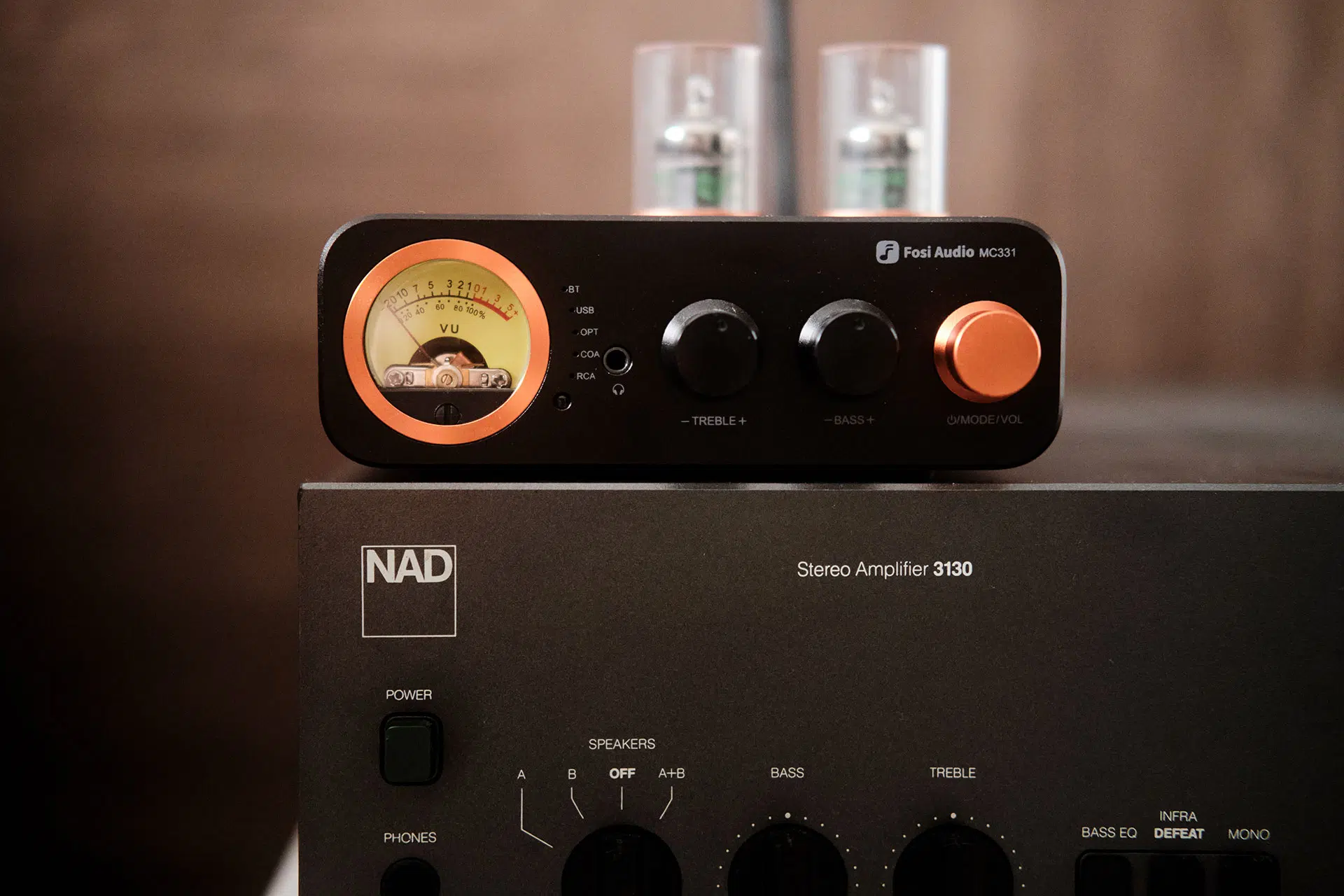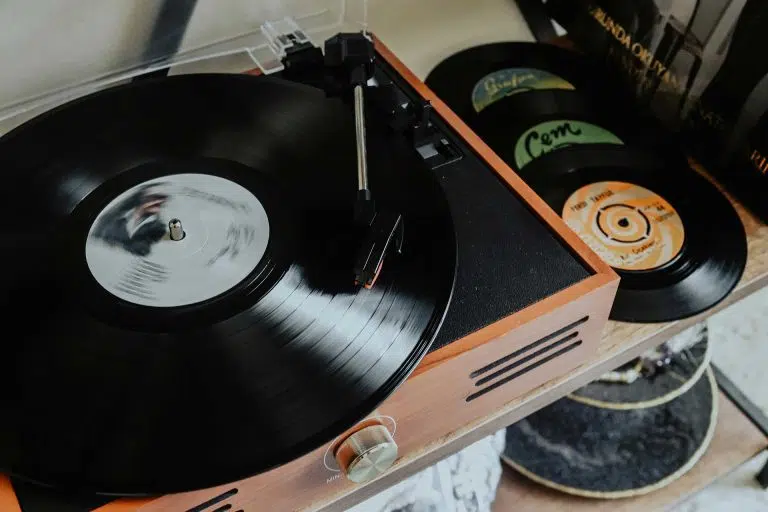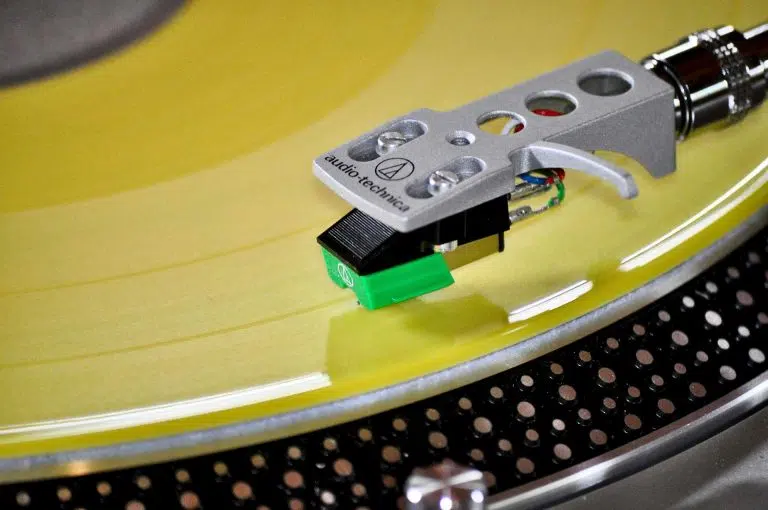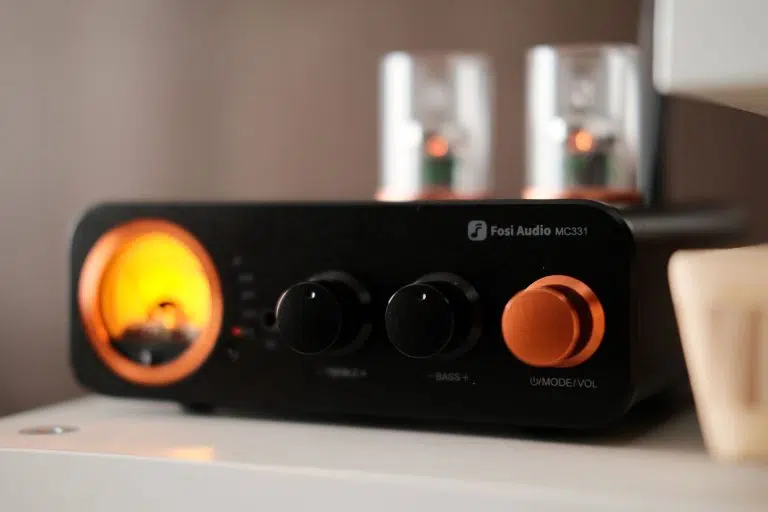Do you lean towards a vintage amplifier or a modern one? Whether you’re a newcomer or a long-time Hi-Fi enthusiast, the debate between vintage vs modern amps is never-ending—especially when building a vinyl setup. For me, choosing a Chi-Fi stereo amp rather than a vintage solid-state amplifier came down to convenience, reliability, and sound quality. With vinyl, you want a system that delivers a clear, engaging soundstage and accurate imaging, and I found that modern amps can achieve that with less hassle.
Vintage gear has its charm, but after using a vintage amplifier for some time, I realized it wasn’t the right fit for my everyday listening. I eventually switched back to my Fosi Audio compact stereo amp, and I haven’t looked back since.
Switching Back to My Fosi Audio Amp
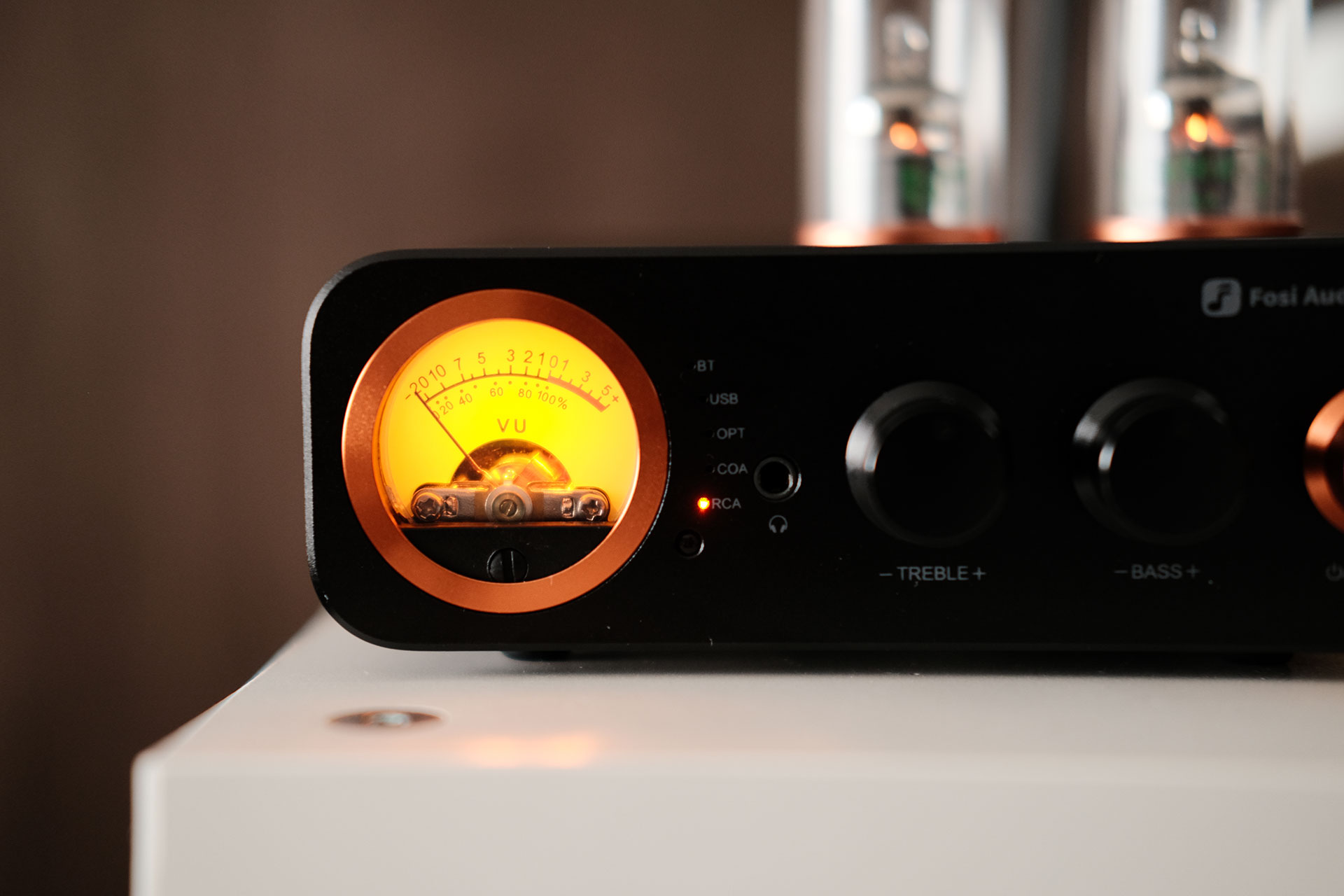
I enjoyed using my vintage amp for a while. It had that classic, warm tone that many people love, but once it started showing signs of trouble or faulty—scratchy knobs, uneven channels, and occasional static—it became more of a headache than a joy. I eventually decided to give up on the vintage amp, even though it still sounded good when it worked. The biggest issue wasn’t just the faults; it was the size and weight. A vintage integrated amp is bulky, and carrying it to a Hi-Fi repair shop is no easy task, especially when you live in an apartment like I do. Just thinking about hauling that heavy thing down the stairs was enough to make me rethink my setup.
That’s when I made the switch back to my Fosi Audio MC331 stereo amplifier, feel free to check out the Fosi Audio MC331 review. It’s compact, lightweight, and easy to handle. Unlike the vintage unit, the MC331 doesn’t eat up all the space on my shelf. A compact stereo amp uses less space, making my listening area feel cleaner and more organized without compromising too much on sound quality.
While I’ll admit that the Fosi Audio MC331 might not have the same punch or character as the NAD integrated amplifier, it does exactly what I need it to do—deliver clear, reliable sound without the drama of constant maintenance. For everyday listening, it’s a simple, stress-free choice.
The Price Factor: Chi-Fi vs Vintage
Cost plays a huge role when deciding between a Chi-Fi stereo amp rather than a vintage amp. Vintage amps from brands like Marantz, NAD, or Sansui are no longer budget-friendly options—they’re becoming expensive collectibles. Even entry-level models in fair condition can cost as much as a brand-new, feature-packed Chi-Fi amp. And that’s before you even think about the cost of repairs. Replacing capacitors, fixing noisy pots, or dealing with failing switches quickly adds up, making the total price of going vintage much higher than it first appears.
With Chi-Fi brands like Fosi Audio, Douk Audio, and Aiyima, you get solid performance with modern features like Bluetooth streaming, USB DACs, tone controls, and compact Class D designs—all at a price that’s tough to beat. These amps offer great value without requiring constant maintenance or restoration.
I know that these affordable small amps are often seen as desktop gear, and hardcore audiophiles might not take them seriously, but honestly, they do the job perfectly for my budget turntable Hi-fi setup. Thanks to modern technology and improved amplifier designs, Chi-Fi can sound surprisingly good—clean, detailed, and powerful enough for my needs. For someone like me who values convenience and reliability, the price-to-performance ratio of Chi-Fi is hard to ignore.
Vintage Integrated Amps Are Bulky and Heavy
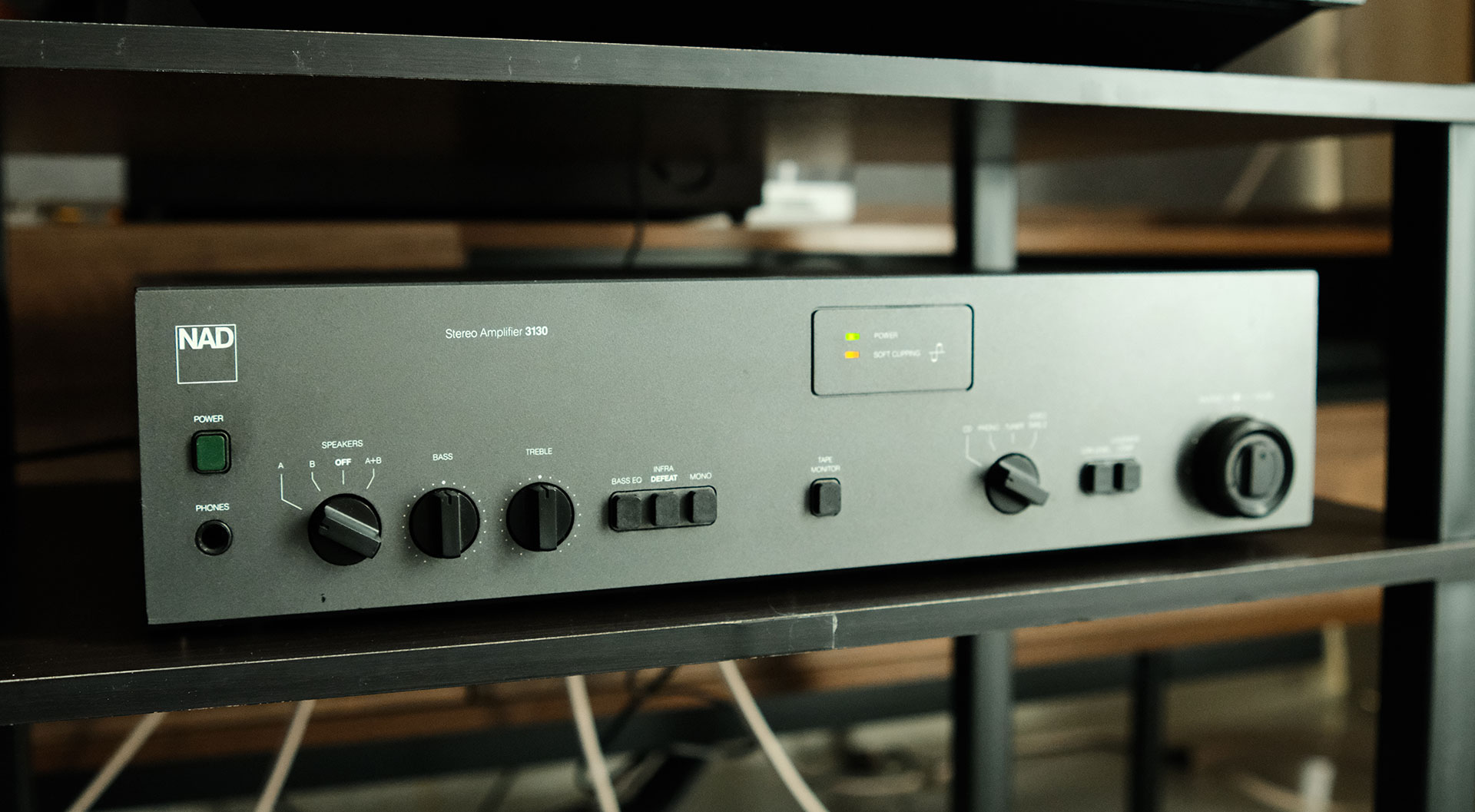
As I mentioned earlier in this article, there’s no denying that vintage gear has character and a certain charm. But the reality is, a vintage integrated amp is bulky and heavy. When it starts acting up, taking it to a Hi-Fi repair shop feels like hauling a car battery. Many of these amps weigh over 10 kg due to the large transformers inside, and they take up a massive chunk of space on your rack or desk. For someone living in an apartment or with limited space, this quickly becomes more of a burden than a benefit.
In comparison, a compact stereo amp uses less space, weighs next to nothing, and can be moved around effortlessly. My Fosi Audio amp fits neatly next to my turntable without cluttering the setup. For small apartments or desktop Hi-Fi systems, this is a major advantage.
Reliability and Maintenance
Vintage amplifiers, while beautifully crafted, are prone to issues as they age. Pots become scratchy, switches oxidize, and capacitors slowly degrade. These issues don’t just affect the sound—they can also be costly and time-consuming to repair. Finding original parts for vintage gear is becoming harder, and professional repairs can sometimes cost as much as buying a new amp.
By choosing a Chi-Fi stereo amp rather than a vintage amp, I avoid all of these headaches. My Fosi Audio MC331 compact stereo amp runs cool, requires zero maintenance, and delivers reliable performance every time I switch it on. No noise, no fading channels—just pure music. In the future, I might consider upgrading to the Fosi Audio ZA3, which offers a step up in power and refinement while still maintaining a compact, affordable form factor.
Modern Sound Quality
Chi-Fi stereo amps are no longer the “cheap alternatives” they once used to be. Many models now use quality components and well-engineered Class D circuits that deliver crisp, detailed, and distortion-free sound. My Fosi Audio MC331 produces clean, dynamic audio that pairs beautifully with both digital and analog sources.
While vintage amps are known for their warm tone, I find the neutral and accurate sound of Chi-Fi more appealing for everyday listening.
Space and Energy Efficiency
Another huge plus is efficiency. A compact stereo amp uses less space, which is perfect for my apartment setup. My vintage amp used to dominate my shelf and ran noticeably hot. On top of that, it consumed a fair amount of electricity, even when playing at lower volumes.
Chi-Fi amps like the MC331 are the opposite—they’re small, cool-running, and energy-efficient. I can keep the music going for hours without worrying about power usage or heat. And with the ZA3’s slightly higher power output in a similarly compact body, upgrading would still save me space while offering more versatility for larger speakers.
Perfect Match for Vinyl and Streaming
Even though I enjoy spinning vinyl, I don’t need a bulky vintage receiver to get great sound. A Chinese hi-fi stereo amp paired with a quality phono preamp works perfectly with my turntable. Plus, my MC331 doubles as my go-to amp for streaming music via Bluetooth matching with my Chi-Fi DIY full-range speakers. Vintage amps can’t match this level of convenience without extra adapters or add-ons.
The idea of upgrading to the Fosi Audio ZA3 is tempting—it has more power and a cleaner sound signature, making it a great option if I want a single amp to handle both my vinyl sessions and streaming setup with ease.
Benefits of a Chi-Fi Stereo Amp Compared to a Vintage Amp
- Saves Electricity – Modern Class D Chi-Fi amps are energy-efficient and run cool, unlike vintage amps that consume more power and generate heat.
- Good for Small Spaces – A compact stereo amp uses less space, making it perfect for apartments, desks, or minimalist setups.
- Affordable – Chi-Fi amps cost significantly less than vintage amps, which are becoming expensive collectibles and often need costly repairs.
- Low Maintenance – No need for recapping or fixing scratchy pots like with vintage amps. Chi-Fi amps work reliably right out of the box.
- Lightweight & Portable – Easy to move or set up, unlike heavy vintage amps that are difficult to carry to repair shops.
- Modern Features – Built-in Bluetooth, USB DACs, tone controls, and remote options that vintage amps simply don’t have.
- Versatile for Digital & Vinyl – Works well with turntables (via phono preamp) and modern streaming devices.
- Consistent Sound Quality – Delivers clean, detailed sound without the coloration or aging issues found in vintage gear.
Final Thoughts

The repair cost of my vintage solid-state amp has been on my mind for a while. I’ve asked myself if it’s worth fixing. Sure, it looks cool and delivers that rich, classic tone I enjoy when spinning vinyl, but it also takes up a lot of space. The heavy build makes it a hassle to move, and owning it feels like a constant commitment. For now, I’ve decided to stick with my Fosi Audio MC331 amp, which is more than enough for my needs—especially since I rarely listen to music at high volumes.
Vintage Hi-Fi gear will always have its place among collectors and enthusiasts, but for my daily listening, the decision is clear. Choosing Chinese Hi-fi gear rather than a vintage amp simply makes more sense. It’s compact, affordable, and reliable. My Fosi Audio compact stereo amp takes up minimal space, uses far less electricity compared to my vintage NAD, and still sounds fantastic with both vinyl and digital sources. No heavy lifting, no costly repairs—just pure, simple music enjoyment.

